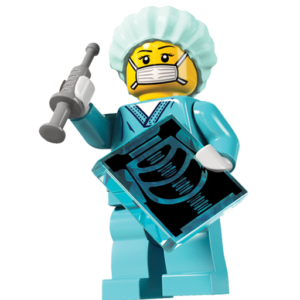What is a Hydrocele?
A hydrocele is a a collection of fluid around the testicle. In young boys, it occurs because there is an open connection between the tummy and the scrotum. This connection allows fluid which is produced in the tummy (called “peritoneal fluid”) to drain down to the scrotum. The body cannot get rid of this fluid quick enough, and so it gathers around the testicle.
The tube that the fluid drains down is called a PATENT PROCESSUS VAGINALIS or PPV for short. This connection was present when your son was born. Before your son was born this tube formed to help the testicle get from the tummy, through the inguinal canal to the scrotum. For most boys this connection closes off without anybody knowing about it. In a small number the connection remains open. If fluid drains down the PPV then the boys develops a hydrocele. If the contents of the tummy come down the connection then a hernia develops.
As well as the common type of hydrocele (also known as a noncommunicating hydrocele), there are 2 other rare types of hydrocele that exist:
- Communicating hydrocele - this where the PPV is big enough to allow the fluid to flow freely in either direction. It may be mistaken for an Inguinal Hernia
- Hydrocele of the cord. This occurs when fluid accumulates in a pocket in the the PPV. This results in a hard swelling in the groin. It may be mistaken for a stuck (or incarcerated) Inguinal Hernia.
How will it affect my son?
A hydrocele is most commonly seen as a swelling in the scrotum. The swelling can give the scrotum a blue appearance. The size of a hydrocele can change. Often it is bigger at night, and after a nights sleep.
Some hydroceles may resolve (go away) by themselves. This can take a number of years.
Is a Hydrocele painful?
Not normally.
Often hydroceles get bigger when the child has a viral illness, which causes him to be upset, and so parents think that he is upset by the hydrocele. What in fact happens is that when the child has a viral illness the child will be off form and irritable. At the same time more peritoneal fluid is produced and this causes the hydrocele to get bigger.
Occasionally just before a hydrocele resolves the it can become large and tense. In this case it can be uncomfortable for the child because of how tense the swelling is. Should this happen you should give your child regular pain relief (such as paracetamol). If you are worried you should speak with your family doctor.
Could the swelling be something else?
The diagnosis of hydrocele can usually be made after taking a history and careful examination.
Occasionally it can be difficult to tell the difference between a communicating hydrocele and an inguinal hernia. In these cases an Ultrasound may not be able to tell the difference either. In these cases it is safer to treat the child as if they have an inguinal hernia. A communicating hydrocele is unlikely to go away be itself, unlike a non-communicating hydrocele, so the treatment is surgery. At the operation the diagnosis is confirmed.
A hydrocele of the cord may mimic a stuck or incarcerated hernia. It may be possible to tell the difference on clinical examination. If there is some doubt as to what is going on an ultrasound may tell the difference between an incarcerated hernia and a hydrocele of the cord. Sometimes it is not possible to get an ultrasound quickly - and in these cases the surgeon looking after your son may decide to take him to theatre for an operation. This is because of the risks of not treating an incarcerated hernia are too great.
A hydrocele in a young child is almost always caused by a PPV. In older children there are other causes of a hydrocele - such as following trauma. Occasionally an Ultrasound Scan of the scrotum is used to make sure that there are no other cause of the hydrocele before treatment is planned.
Are there any long term consequences of a HYDROCELE?
Hydroceles do not cause any long term health problems.
There is a belief that if a man has a hydrocele after puberty than it may affect his fertility. Certainly, if a man goes to a fertility clinic because he cannot have a child, and is found to have a hydrocele he will be sent to have the hydrocele fixed. There is no evidence to prove that this improves the chance to father children.
Unfortunately children can be cruel. There is a small chance that if your child has a hydrocele, that they could be bullied at school.
What treatment does my son require?
Hydroceles may resolve themselves. The older a child, the less likely that a hydrocele will resolve by itself. Therefore it is uncommon to treat a hydrocele in a child who is less than 3.
A hydrocele can be cured by an operation called a LIGATION OF PPV. The operation in a child is different to the operation in an adult. In a child the aim of the operation is to tie off the connection from the tummy to the scrotum.

Download Information Sheet
Click the button below to download my information sheet Hydroceles - Boys.

Ligation of Patent Processus Vaginalis (PPV)
The operation used to treat hydroceles in younger children is called a Ligation of PPV. This operation is different to a Jaboulay procedure, which is used to treat hydroceles in adults.
Click the button to find out more information about Ligation of PPV.

Jaboulay Procedure
In some older children hydroceles are treated by an operation called a Jaboulay procedure.
Click the button below to find out more information about this operation.
